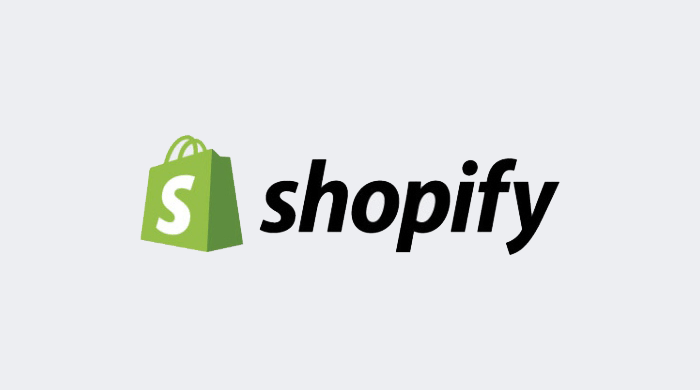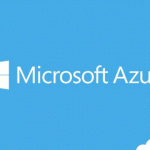There’s a lot that goes into running an online store, and your choice of platform can have just as big of an effect on your business as choosing a building or location for a physical store. It’s not the end all of the business – but it certainly can make or break your business – and can either expand your opportunity or severely kneecap your business.
What Is Shopify?
Shopify is part of a group of turn-key ecommerce (aka “hosted ecommerce”) solutions that provides everything you need from end to end (minus the product and business know-how) to setup and start selling your product(s) to the world in contrast to you putting all the pieces together yourself.
It’s sort of like hiring a general contractor to build your house, over being the contractor and hiring sub-contractors yourself. You’re still in control, but you let the general contractor use their expertise to make the project happen.
Shopify competes mainly with BigCommerce and Volusion – all three of which provide turn-key ecommerce solutions, which in turn competes with non-turnkey solutions (like setting up your own store with WordPress).
And these hosted solutions sort of compete and integrate with ecommerce “marketplaces” like Amazon, eBay and Etsy.
Shopify also has a “Buy button” functionality that allows you to use Shopify as Point of Sale (POS) / Inventory option – and let customers click to buy your products anywhere online (Pinterest, Facebook, WordPress blog, Tumblr, etc). I’ll be looking less at that – and more at Shopify’s full online store package. You can get the Buy button only as part of the Lite Plan, but it competes with PayPal rather than full online store options.
Cons of Using Shopify
Not every platform is perfect though, and a Shopify review wouldn’t be complete without covering the cons of using Shopify for an online store. Let’s dive into the 6 cons of using Shopify for ecommerce.
Pricing

If you have a small online store – Shopify is going to be more expensive than BigCommerce at the beginning, and get more affordable as you grow. The kicker isn’t the $5 difference – it’s the transaction fees that Shopify charges (which are on top of any credit card feed). They justify it by pointing out that they go away as you grow – but it still represents a bit of a barrier to entry for Shopify.
They ameliorate some of the pricing by offering the “Get Started” option at $14/mo – but to me the transaction fees come off as a con of using Shopify, especially since you may not be sure about your sales volume or profitability at the start.
If you want a small online store – and plan on staying small, then you might want to also check out BigCommerce (just don’t go with Volusion because of their Analytics issues). But otherwise, it’s not a deal breaker for most online store owners – but is a con to be aware of and plan for.
In 2014, Shopify has restructured their pricing in line with new industry business models. To put their pricing in context and help you decide between competitors (like Bigcommerce), here’s a rundown of 4 elements of pricing you should consider.
First, your monthly price – the sticker price you pay every month for a certain level of features. Shopify’s plans start with the Lite Plan at $9 USD per month and go up from there, for example. But note that the Lite plan is only for Buy button sellers. Really, I’d say that Shopify starts at $29/mo and goes up.
Second, your platform transaction fees – the additional fee you pay to a platform as a percent of sales. Shopify used to charge these on all their plans, but no longer does. You should pay attention to these when cross-comparing.
Third, your credit card fees – these used to be pretty standardized – and for the most part still are. However, Shopify recently set up their own POS & processing network so you don’t have to go through a 3rd party processor. That means fees go to Shopify rather than a processor like PayPal or Authorize.net. It can be confusing, and there are some lock-in issues to consider with Shopify. But be sure your are comparing apples to apples.
Fourth, your add-on fees – these are 3rd party apps, plugins or bits of software that you can purchase to make your store better. Usually these are one-time purchases, but sometimes they run off transaction fees. Shopify has a huge app store. Many are free, but some are paid. Be sure to budget for these when planning your store.
Pricing is “con with caveat” for Shopify. The built in credit cards & no transaction fees are huge, but monthly price & add-on fees can add up. Basically, Shopify is slightly pricier than Volusion & slightly cheaper than Bigcommerce as a general rule. The price differences are close enough that you should be comparing based on features & service.
Shopify, like all hosted platforms, is going to be consistently more expensive month to month than a self-hosted store you run yourself. However, self-hosted stores (like WordPress + WooCommerce) tend to have really $$$ development needs occasionally – especially if you’re running a bigger setup.
Hacking around customization

Shopify looks good out of the box, has great custom themes available, and has the ability to be fully customized by a developer/designer but to its customization setup – they use a unique setup to customize their themes versus using something like PHP for their templates. It’s a huge plus in some ways, but for someone who loves to tweak things without doing a full-on customization, it can be annoying.
I’m used to tweaking WordPress templates because they are in PHP – which is a common language and tons of forums and support, while the Shopify Liquid setup is a bit foreign to me and any other first-timers.
It is fairly straightforward to pick up, and they do offer amazing support in the Shopify forums, but I still consider it a bit of a con to have to become familiar with Liquid to tweak my store’s theme.
Content Marketing

Content marketing is a huge marketing medium for ecommerce. You can boost you organic traffic, increase social shares, grow your brand, and educate your customers. To me, blogging software is a must for an online store.
Shopify comes with built-in blogging software…but it’s not the greatest – especially if you are spoiled for WordPress. It gets the job done, and it’s better than it’s competitor’s options, but is definitely something I’d love to see improved upon.
Shopify Jargon

Every ecommerce platform is going to have a learning curve, but I found that Shopify has a slightly steeper curve just because the jargon the use is slightly off. Whether it’s their Liquid theme setup, using “collections” over “categories”, or various other small edits – I find their store setup to be not exactly how I’d set things up.
It’s not a huge con – but other solutions like BigCommerce are a bit more straightforward with their “user experience.” This con is much improved though with the release of Shopify 2 (as seen in the initial setup video below) – but is still there.
Lock-in

Lock-in is something I had to include in my Shopify review, even though it is a con for all-in-one ecommerce in general. Here’s the deal – if you ever decide to move your store to a different platform – it’s not going to be smooth. This makes choosing an ecommerce platform especially tricky because you have to plan for the future – and not just consider costs right now.
However, if you were to ever want to leave, the best you could get would be a CSV export of your product information. Everything else – gone. It’s the same with BigCommerce and Volusion, but it’s still a con to consider when looking for an online store platform.
Initial setup
The last con of using Shopify for your online store is their initial setup process. With the release of Shopify 2 – Shopify has definitely made initial setup of your online store much easier – but it still isn’t a “just add water” step by step. It’s easy in a sense, but I think they oversell it a bit. It requires a little bit of technical know-how (especially to get your domain name redirecting correctly).
For anyone who buys into Shopify expecting to be making money in 15 minutes is going to be disappointed. The reason is takes a bit longer, and requires a bit of technical knowledge is that Shopify does do it right, and doesn’t allow you to cut corners – and they don’t make real decisions for you. However – to round up the last con – here’s a video tour of the Shopify backend so that you can see for yourself.
If you are looking for something a little bit cheaper, and a little bit easier to setup – then I would also consider BigCommerce. If you have any comments, questions, or experiences – let me know in the comments!



